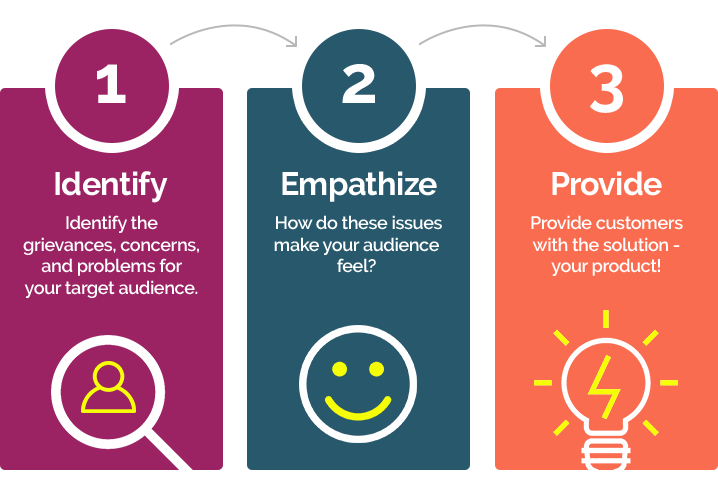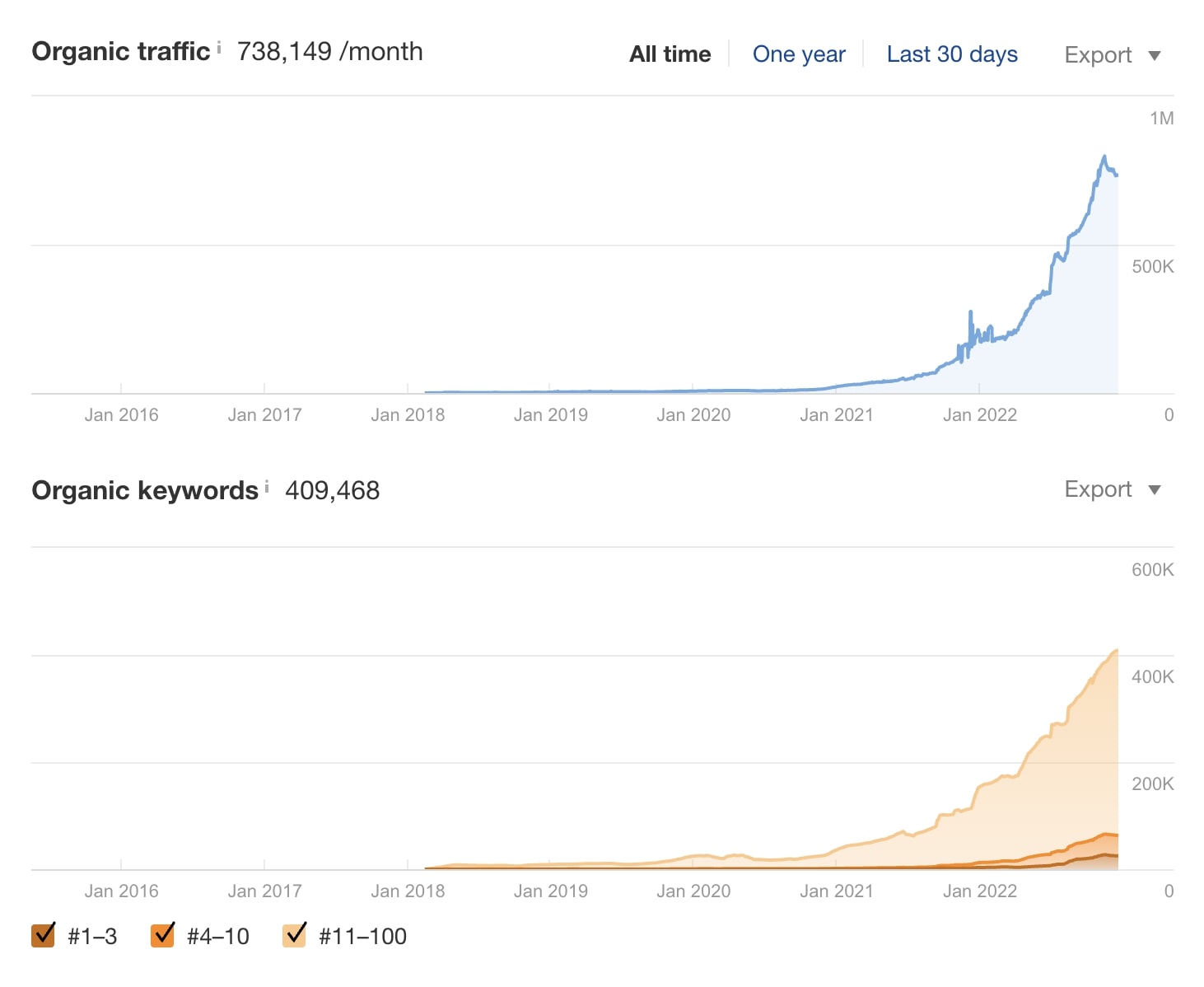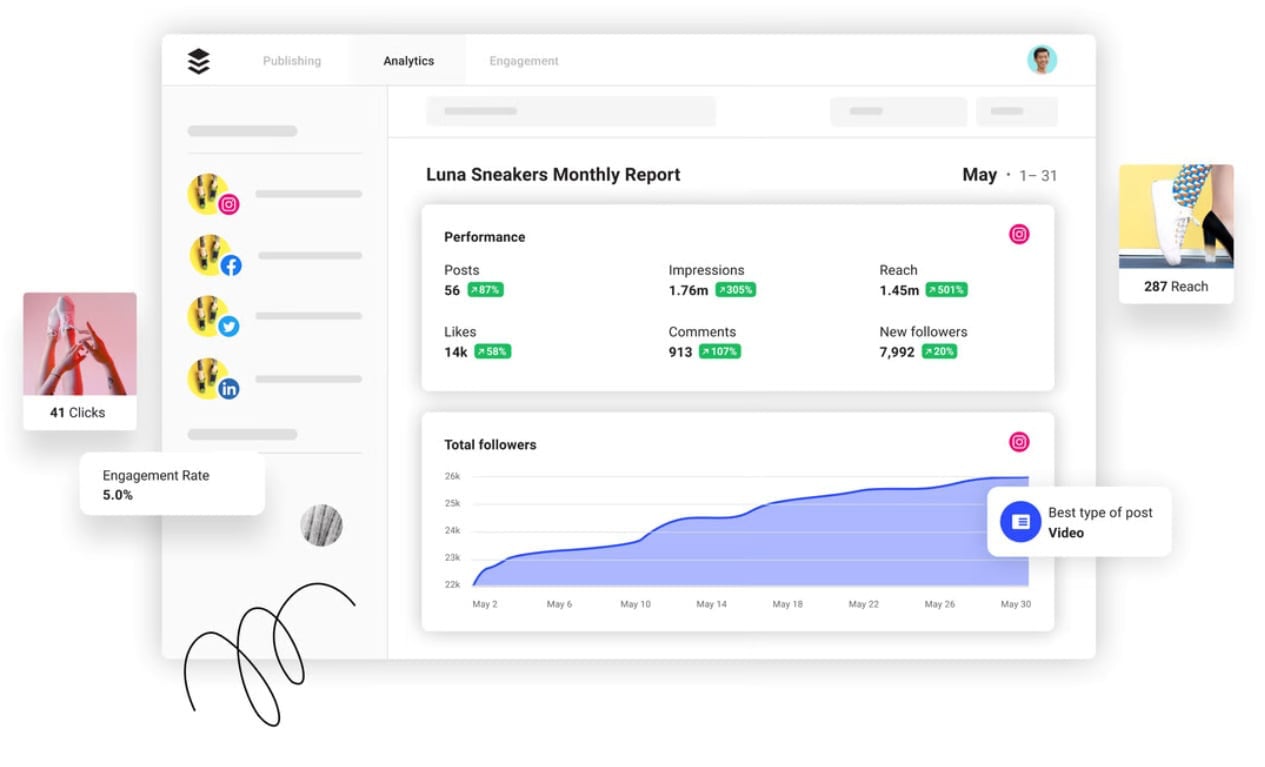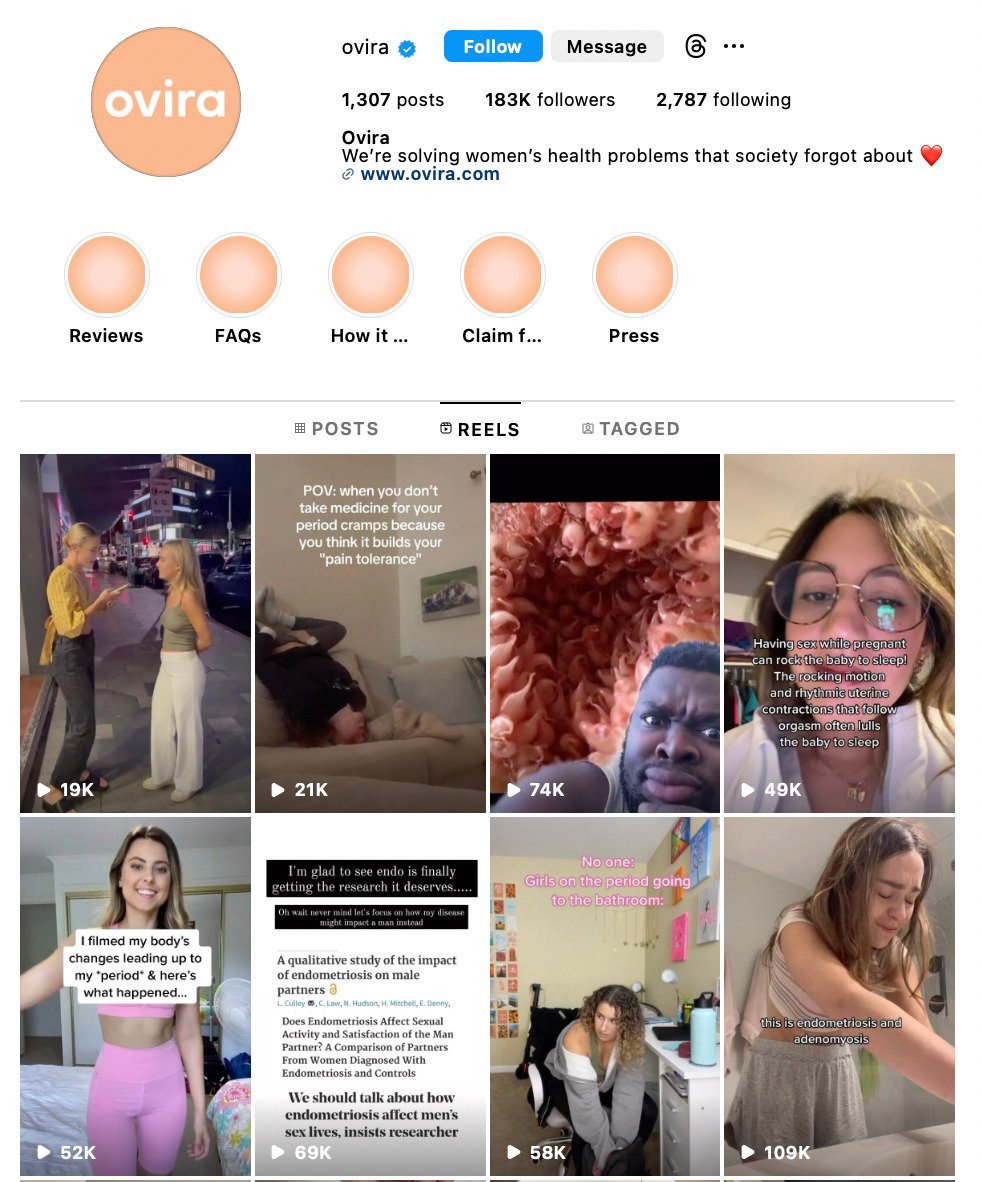
Did you know there are nearly five billion active internet users globally? Well, that accounts for 69% of the world’s population. It also means there is a ton of opportunity for your business to engage with an audience and drive higher sales.
Now that websites are a dynamic marketing tool, yours should also provide much more than the basics. With a strong content marketing strategy, you can create, publish, and distribute valuable content and propel lucrative customer interactions.
A CMI study states that content marketing generates 3X as many leads as traditional outbound marketing but costs 62% less. And yet, despite its undeniable impact, many businesses do not know how to implement an effective content marketing strategy.
In this article, we have rounded up the most powerful content marketing tips – straight from the experts in the field. So, roll up your sleeves and grab a pen and paper. You are in for a lot of insightful info!
1. Understand your target audience
Before you create any sort of marketing strategy, you must know your audience. In this context, you risk creating content that is too broad or irrelevant, and that could result in a low ROI. In fact, today, an average of 40%-60% of content published produces zero value.
This is supported by the fact that only 42% of marketers know the basic demographic information of their target audience, the products they are interested in purchasing, where they consume content, and so on.
Therefore, besides having one specific target audience in mind, it is super important to get to know them, according to Alexandra Cote, a seasoned SaaS content consultant.
She says, “analyze their activity and behavior, conduct targeted interviews, or run surveys to get a feel of their pains, needs, and jobs to be done. This will ensure that your ideas, tips, and examples will resonate with your target customers and can provide value.”
And if you are sick of sketching out pretty but useless customer avatars and ideal customer profiles, follow the Jobs-To-Be-Done framework – according to Hannah Szabo, Head of Operations at Digital Brand Kit shares.
She says, “JTBD does not care about your age, gender, college major, favorite color, or number of hairs on your left kneecap. Instead, it seeks to understand your customers based on the reason they “hired” your product or service. What emotional, physical, or social job do they need help with?
Here is a simple but sturdy template you can use to identify your customers’ job(s) to be done:
When [problem situation], I want to [motivation, what action do I need to do?] so that I can do [outcome, utilitarian job], making me feel [emotional job]. So others see that I am [social job].”
In addition, you must remember your content marketing strategy should engage and delight potential customers at any stage of the buyer’s journey. That could mean listening to sales call recordings and reading prospect notes in your CRM.
Levi Olmstead, Associate Content Marketing Director at Whatfix, emphasizes that doing so shines a light on the challenges potential customers need to solve, what current customers are finding value in your platform, and your product’s key differentiators.
“This will enable you to create content that resonates with your product’s hyper-contextual target persona and write specifically to their needs, with details on why your product is the right solution for that specific issue,” he explains.
n average of 40%-60% of content published produces zero value. Click To Tweet2. Choose the ideal content hosting platform
Not all traffic is created equal. It does not matter if Facebook sends you 100 new website visitors every time you post; all they do is lurk and never buy. If the audience coming from LinkedIn converts, that is where you should be paying attention.
Choosing the right platform also depends on your target audience and the type of content you produce. For example, LinkedIn is more business-oriented, making it ideal for B2B companies or professional content, while Facebook is great for B2C businesses or more casual and engaging content.
The BeReal app, on the other hand, is a great platform to produce authentic content on-the-go. You can take advantage of it to highlight behind the scene moments, put the spotlight on your team, share projects you are working on, and so on.
Obviously, for each platform you wish to have a presence on, creating unique content copies that align with the format most likely to generate engagement is necessary.
Social selling platform Depop, for instance, has found much success on Instagram. Their core strategy involves them reposting content from the Depop site itself, doing a bit of influencer marketing and running paid ads on top of that. Their Instagram account aims to instill a sense of FOMO in the users, prompting them to head back to Depop as much as possible.
Similarly, Chipotle was one of the first brands to take a chance on TikTok – an investment that paid off for the restaurant chain in the long run. Most of their content involves the TikTok trend of challenges. Its first campaign, #ChipotleLidFlip, generated 240+ million views on the platform.
In addition to choosing the right content hosting platform, Alexandra Tachalova, Founder of Digital Olympus, suggests repurposing the content you create for your blog across other platforms
“On LinkedIn, you can create a deck summarizing the main points of your content piece – on YouTube, a short video discussing the key ideas; on X, formerly Twitter, a thread sharing the key takeaways. To add a unique touch to each post, you could include expert quotes or additional tips not covered in the original content. This strategy will enhance the promotion of your existing content while saving time on generating new ideas,” she explains.
3. Emphasize quality over quantity in content
Content marketing aims to provide your audience with helpful information, not with something readily available. Therefore, whenever you see a great idea, avoid replicating it with some minor adjustments. Instead, seek new ways to create your unique angle and scale your content.
Project management software, Monday.com published 1,000 SEO articles in a span of 12 months, upping the number of content pages on their site to 2,000+. They focused on four key elements:
- Having a proper style and editorial guideline for the writers to maintain consistency in writing, structure, and tone of voice
- Identifying keywords and topics based on priority and relevance – for instance, they spent one month in the beginning publishing content on the “project management software” keyword. They are in position 1 for a high-value conversion page with 50,000 monthly searches.
- Building a strong team of 15 high-quality writers
And with that amount of content resulted in an uptick in their blog traffic.
Of course, this does not mean you should also publish 1,000 blogs in a year. However, 80% of your focus should be on quality and 20% on quantity or vice versa depending on the focus of your website. However, you must think of ways you must stand out in the crowd.
Shelley Kilpatrick, Manager of Content Marketing at BigCommerce, shares interesting tips to create quality content. She explains, “If you are looking for epic content, I am a big fan of original research. Not only is it unique to your brand, but you can take the results and use them to fuel all kinds of content all year. For example, you can:
- Publish a long-form report as a downloadable asset, interactive infographic, or microsite
- Host a webinar to dig deeper into the data and share additional insights from subject matter experts
- Repurpose snippets of the data across other channels, like digital ads, blogs, email series, podcasts, videos, etc.
- Send a press release and pitch the survey results to media outlets to increase your brand’s visibility.
And if you do the same study each year, you can compare results to see what has changed, build more authority for your brand, and keep people coming back year after year.”
We should also remember that content quality matters more than ever as we move into an age of AI. In recent months, there has been a huge surge of low-quality, generic, and low-effort AI-generated content. This is only set to increase as the tools become more widely used.
In the future, Google’s new approach to search will likely make low-quality AI-generated content redundant, which is risky for publishers that rely on it.
According to Samantha North, SEO coach and consultant at SamanthaNorth, with thoughtful and well-crafted prompts, you can generate high-quality content with the help of AI. But the human touch is essential.
She says, “To achieve high-quality content, I always do three things:
- Create a comprehensive research-driven outline.
- Go beyond the page 1 competitors, and make sure you bring in fresh insights and perspectives.
- Include personal expertise and opinion, either that of the writer themselves or by interviewing experts in the field. (My favorite tactic is using HARO queries to easily find a range of expert quotes).”
So, focus on crafting high-quality content such as online courses, that appeals to your target audience and provides them with in-depth, valuable information. It is better to publish five pages worth of eBook that thoroughly answers a specific question than one simple blog post that answers ten questions with minimum explanation.
4. Uphold consistency in content production and publishing
This is cliched advice but true. Regularly posting quality content to the appropriate channels can be tedious and time-consuming. However, this consistent practice helps build your brand to be identifiable at a glance and meets your customer expectations.
According to Forrester, a consistent experience across all touchpoints influences brand trust positively. In another research, consistent brands are worth 20% more than those that are not.
Maryia Fokina, Digital PR & Content Specialist at Tidio, says, “The world of content marketing is very fast-paced and does not tolerate anyone lagging. What worked a few months ago might not work today, and professionals must acknowledge it. How does one stay in the loop?
Consistency is key. If you produce one amazing piece of content, it will probably be successful. However, even if it is evergreen in your industry, one article can only do so much.
On the other hand, if you consistently produce pieces that show your authority, expertise, and trustworthiness (the famous E-E-A-T), you will climb the content marketing ladder, grow your traffic, and establish your brand as the industry leader.
I see our content marketing efforts as one big puzzle my team and I must complete. There are a myriad of pieces, and we consistently pick one up and put it in place. Eventually, we start seeing the bigger picture, and our efforts pay off, but only if we do it consistently.”
Popular FinTech company PayPal’s approach to content marketing is highly consistent. For starters, it knows its audience well and uses storytelling to turn what could be sterile, technical subjects into engaging narratives.
It also addresses topics relevant to their target audience, such as financial equality for women or the benefits of touchless payments for small businesses, to resonate with the people who are most likely to use their services.
Therefore, to be consistent in your content marketing:
- Keep your editorial calendar handy as it helps you plan out what content will be posted, when, and where.
- Keep up-to-date with the latest SEO trends and guidelines to ensure your previously published content stays easily discoverable.
- Once you have determined a schedule that works for you, stick to it. Regular posting keeps your audience engaged and looking forward to the next content piece.
5. Monitor content performance
How do you know if your content marketing efforts strike the right chord with your audience? A SEMrush study suggests that 84% of businesses have a content marketing strategy but only 11% think they have an excellent one.
The thing is, target audience research, quality content planning, and content repurposing are simply building blocks that need to be stacked correctly. If you manage to align everything, the results will show but where will they show? Which metrics should you keep an eye on?
According to Olga Mykhoparkina, Founder at Quoleady, it depends on the content format and the platforms you are working with.
She explains, “When it comes to SEO blog content, I usually recommend tracking traffic – users coming to visit your website as well as conversion – both numbers and rates (%). These are the most important metrics that make a difference. Essentially, you need to increase traffic and improve conversion to see some great results. However, there are also intermediate things like click-through rate (CTR), bounce rate, and scroll depth that are important to track as they could influence your traffic and conversion numbers, affecting your bottom line.”
On the other hand, Lauren Funaro, Head of Content at Scribe, says, “Traffic is an excellent leading indicator of success. But my north star metrics are:
- Sign-ups + activation (did they use the product?)
- Pro conversion (did they see so much value that they became a paid user?)
These tell me that my content is both reaching the right audience and is compelling enough to turn them into users likely not to churn. And if something is not working, we can optimize it for traffic and conversion.”
Therefore, before tracking your content performance, decide on the metrics. Instead of checking every single data and wasting your time, pick out metrics relevant to your business goal.
Use Google Search Console to see how your website is performing and pick any of these techniques to measure ROI on your content and social media campaigns.
6. Prioritize content promotion
Meisha Bochicchio, Digital Content Marketing Program Manager at VMware, thinks it is easy for content marketers to get stuck in an endless loop of content production. Deadlines are tight, and many teams prioritize vanity metrics, like the number of blogs launched, over metrics like engagement and performance.
She says, “But distribution and promotion are equally, if not more, important than production. Think about it this way: how effective is your content if no one sees and engages with it?
Avoid this mistake by starting from the beginning. Add promotional planning as a requirement when you are developing your content plan. Think about each channel relevant to your audience and how the content can be repackaged and repurposed meaningfully.”
Another mistake to avoid, according to Meisha, is not simply spin up generic copy that will be copied and pasted across channels. Instead, consider what works best for each channel. Your approach to email should be very different from your approach to social media.
“Once you know what channels you will promote your content, you can request or create customized assets and copy to optimize performance,” she signs off.
For instance, Ovira, a company that makes a period cramp relief device, produces short videos on Instagram to educate and inform on women’s health and bodies. The visual medium for this brand is a lot more effective than merely publishing photos with long captions.
Through videos, Ovira is able to demonstrate how their product works and talk more openly about the sensitive topic.
In a nutshell, your content marketing success cannot live by organic search traffic alone. Instead, it is your job to take your content to the people who need to see it. Do not overlook promotion!
Over to you for content marketing strategies
Here is the deal – content marketing is a results-oriented function. And even though it is evolving every day, its essence never changes. Content marketing is, after all, about your audience, not your business.
As our experts rightfully say, your efforts should be directed toward serving the needs of and solving the problems of your desired customers.
And if you manage to deliver content that resonates with them, you will not only build a loyal audience but also create brand advocates who will organically enhance your credibility in the marketplace. Good luck!









